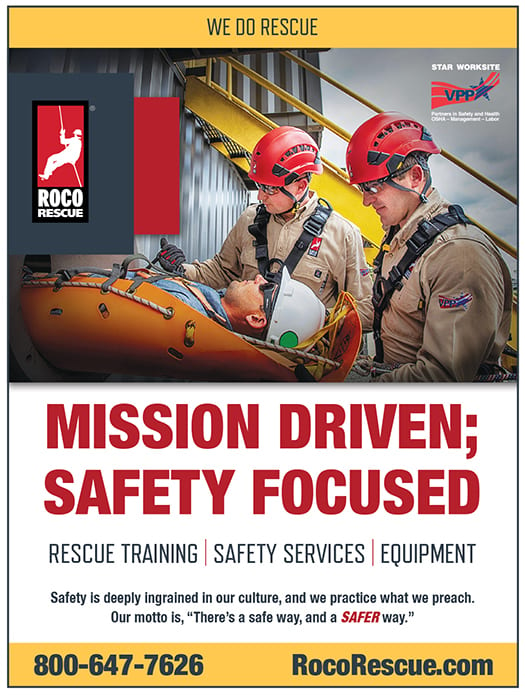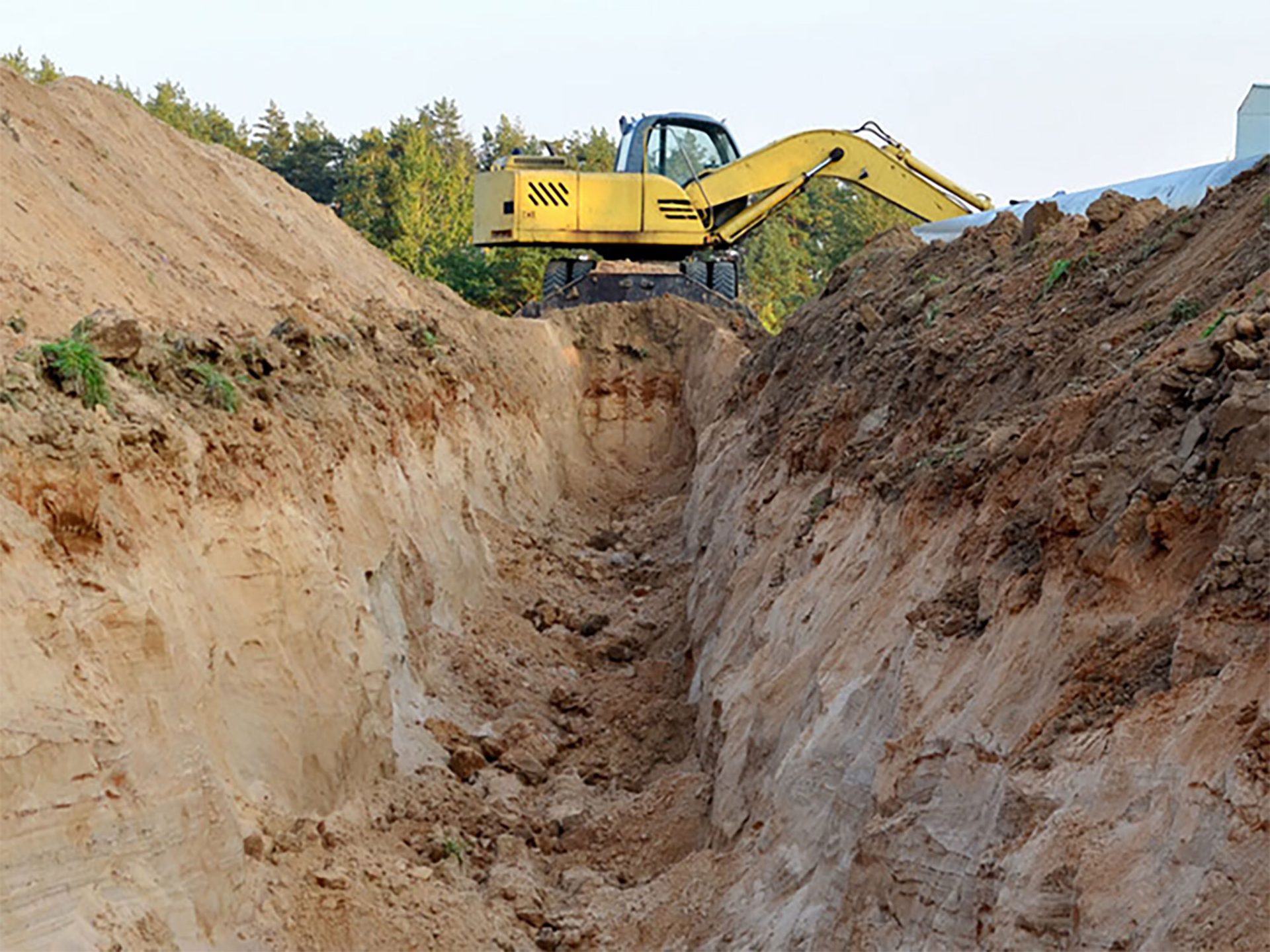COVER STORY

Photo: onuma Inthapong / E+ via Getty Images
and Protected
Connected
How gas detection technology keeps lone workers safe
By John Wagle
A
cross energy, utilities, oil and gas, manufacturing, and emergency response industries, lone workers face a unique series of challenges and risks. Lone workers operate in isolation, often in remote or confined environments, where traditional safety practices may fall short. When something goes wrong, such as exposure to toxic gases or a sudden fall, there's no coworker nearby to raise the alarm. This in turn makes fast and reliable hazard communication both more challenging and all the more essential.
Modern advancements in connected gas detection and automated alerting have redefined what it means to protect lone workers; by combining real-time data sharing, GPS tracking, and automatic alarm escalation, safety teams can now maintain visibility into a worker’s environment, even when that worker is out of communication range.
Understanding the Lone Worker Safety Challenge
Lone workers may be tasked with inspecting chemical tanks, performing maintenance on utility lines, entering confined spaces, or monitoring pipelines in isolated terrain. These environments pose an elevated risk of gas exposure, slip or fall injuries, medical crisis, and delayed emergency response.
While traditional safety measures, such as periodic check-ins or buddy systems, can provide structure, they still ultimately rely on human consistency and timing. A true connected worker solution can ensure hazard communication must be automated, continuous, and situationally aware.
Regulations around lone worker safety vary by region, but the underlying risks are well documented. Delayed communication during a gas exposure or man-down event can turn a manageable incident into a life-threatening emergency. For companies with distributed workforces and evolving safety hazards, adopting connected safety systems is becoming a necessity rather than a best practice.
What Connected Safety Looks Like in Practice
Modern gas detection systems for lone workers typically center around a wearable multi-gas monitor. These monitors are capable of detecting hazards such as combustible gases, oxygen deficiency, carbon monoxide, hydrogen sulfide, and even volatile organic compounds (VOCs). More advanced monitors feature man-down alarms, location tracking, and geofence monitoring in addition to gas detection.
When used as a remote communication device, these monitors transmit real-time gas readings, worker location, and alarm status to safety managers or monitoring teams. If a worker stops moving, presses a panic button, or their instrument goes into alarm, the system can immediately notify designated contacts (supervisors, emergency services, etc.) via text, email, or within a centralized dashboard. Some advanced systems offer dual connectivity modes, using cellular service when available and switching to satellite when operating in off-grid areas. This redundancy ensures a continuous communication link no matter where the worker is located.
As an example, a connected safety multi-gas detector can deliver real-time data to a cloud-based platform. Safety managers can view gas levels, motion status, and GPS coordinates across all lone workers, helping them respond proactively rather than reactively. The system can also automatically notify key personnel when an incident is recorded for follow-up.
The Role of Real-Time Monitoring Software
Connected devices are only one part of the equation. A centralized monitoring platform is critical for interpreting and responding to the data those devices generate. These platforms consolidate gas readings, alarm events, worker status, and location into a single view.
In the event of an emergency, such as exposure to high levels of carbon monoxide or a fall resulting in unconsciousness, the system automatically triggers alerts to pre-assigned personnel.
Many platforms also offer live map views, customizable alert thresholds, and audit logs to help EHS teams manage risk in real time and demonstrate compliance over the long term.
For companies lacking 24/7 internal coverage, some platforms offer the option of professional monitoring. In these cases, trained operators monitor alarms continuously and follow predetermined escalation procedures to ensure no critical alert goes unnoticed, regardless of shift schedules or available manpower in a central operations center.
Delayed communication during a gas exposure or man-down event can turn a manageable incident into a life-threatening emergency.
Real-World Scenario
Consider a maintenance technician sent to inspect a remote tank farm late at night. She's working alone and out of direct communication with the central team. If she encounters a hazardous gas leak, her wearable monitor will detect the change, and the system will immediately transmit her location and gas exposure levels through the communication gateway.
Within seconds, her supervisor receives a text alert detailing the incident. If no motion is detected after a set period, the system can also escalate with a man-down alarm. Even if the technician is incapacitated, the system ensures that the right people are notified and dispatched without delay.
This live system of hazard communication turns what used to be a blind spot into a point of visibility, enabling faster, more informed response. Analytics can be further deployed to develop a clear view of where and when hazards are being encountered, and counter measures developed to prevent future incidents.
Supporting Technologies: Area Monitoring and Sensor Expansion
Lone worker safety doesn’t stop with personal devices. Area gas monitors, particularly those that communicate peer-to-peer or via cellular networks, can help reinforce hazard boundaries and provide situational awareness across broader worksites. If a lone worker approaches an area monitor registering unsafe gas levels, alerts can be shared across both the area and personal devices to improve awareness and escalate response.
Additionally, the continued expansion of gas sensor technologies means safety programs can now be tailored to a wider range of hazards. Devices that support hydrogen, high-range carbon monoxide, ammonia, and hydrogen cyanide are increasingly being used in industries where these gases pose specific operational risks.
The ability to mix and match sensors for a given job, combined with automatic data logging and cloud integration, gives safety managers the flexibility to support both common and uncommon hazards without the need for specialized training or additional equipment.
Best Practices for Implementation
1. Use an integrated system. Choose tools that combine gas detection, location tracking, motion monitoring, and connectivity in one platform. This avoids gaps and ensures a seamless safety net.
2. Customize your escalation protocols. Define who gets notified, how quickly, and under what conditions. Route alerts to multiple roles to ensure coverage, especially for off-hour shifts.
3. Conduct drills and hands-on training. Make sure lone workers know how to activate panic features, respond to alarms, and test their equipment. Reinforce procedures through realistic exercises.
4. Build redundancy. Use devices with cellular and satellite failover and consider layering personal monitors with area monitoring equipment to increase situational awareness.
Lone worker incidents are often invisible. No one sees the fall, hears the alarm, or notices the exposure, unless technology fills that gap. By using connected gas detection tools, real-time monitoring platforms, and automatic alerting protocols, safety leaders can communicate critical hazards instantly, regardless of distance.
As industrial operations become more distributed and specialized, protecting workers who operate alone has become essential. Fortunately, connected safety tools are more accessible, more scalable, and more intelligent than ever. From the moment a worker steps into the field to the second an alarm is triggered, these technologies help ensure that no one is truly alone on the job.
John Wagle is Regional Sales Manager at Industrial Scientific.


